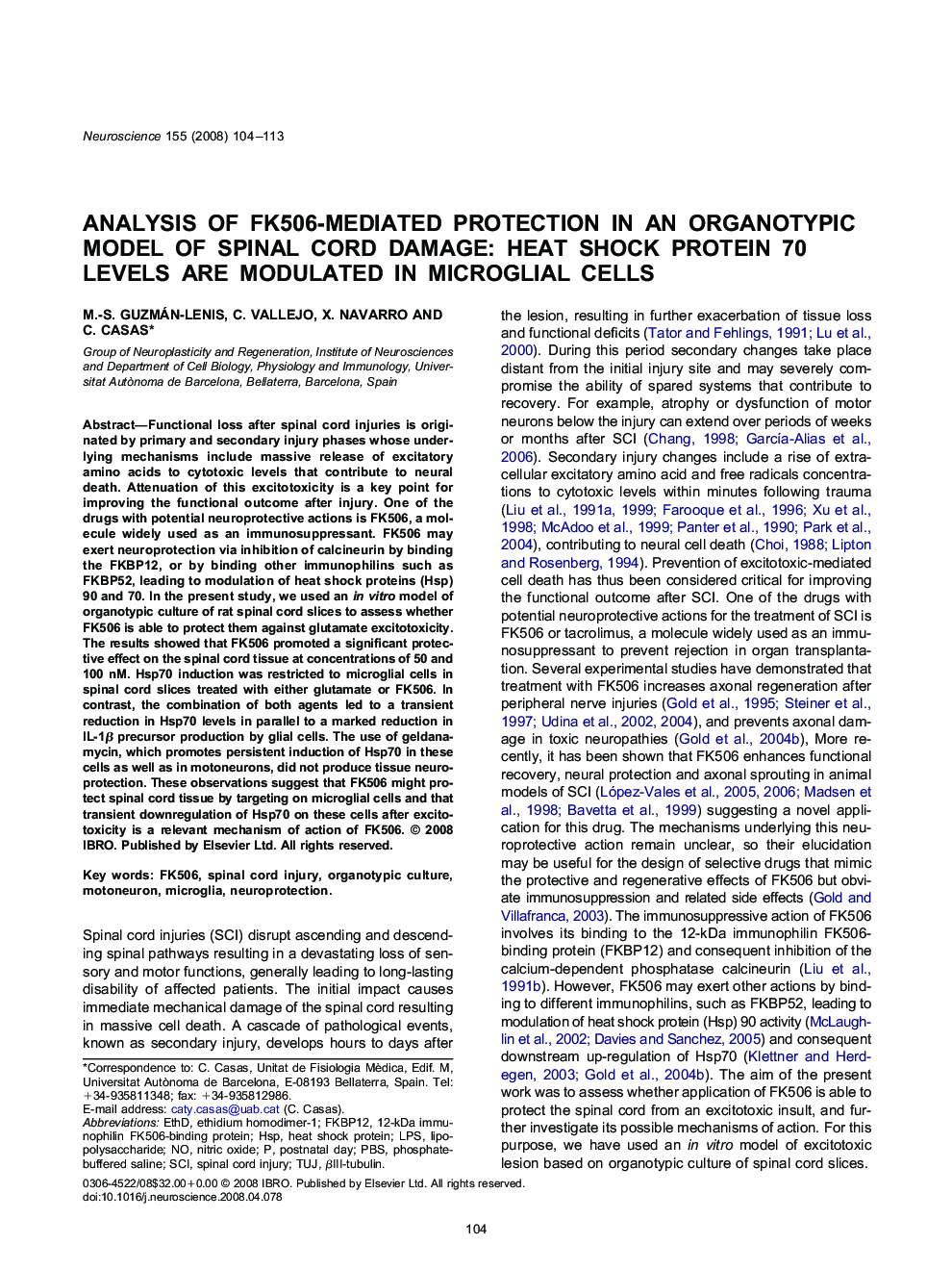| Article ID | Journal | Published Year | Pages | File Type |
|---|---|---|---|---|
| 4340482 | Neuroscience | 2008 | 10 Pages |
Functional loss after spinal cord injuries is originated by primary and secondary injury phases whose underlying mechanisms include massive release of excitatory amino acids to cytotoxic levels that contribute to neural death. Attenuation of this excitotoxicity is a key point for improving the functional outcome after injury. One of the drugs with potential neuroprotective actions is FK506, a molecule widely used as an immunosuppressant. FK506 may exert neuroprotection via inhibition of calcineurin by binding the FKBP12, or by binding other immunophilins such as FKBP52, leading to modulation of heat shock proteins (Hsp) 90 and 70. In the present study, we used an in vitro model of organotypic culture of rat spinal cord slices to assess whether FK506 is able to protect them against glutamate excitotoxicity. The results showed that FK506 promoted a significant protective effect on the spinal cord tissue at concentrations of 50 and 100 nM. Hsp70 induction was restricted to microglial cells in spinal cord slices treated with either glutamate or FK506. In contrast, the combination of both agents led to a transient reduction in Hsp70 levels in parallel to a marked reduction in IL-1β precursor production by glial cells. The use of geldanamycin, which promotes persistent induction of Hsp70 in these cells as well as in motoneurons, did not produce tissue neuroprotection. These observations suggest that FK506 might protect spinal cord tissue by targeting on microglial cells and that transient downregulation of Hsp70 on these cells after excitotoxicity is a relevant mechanism of action of FK506.
